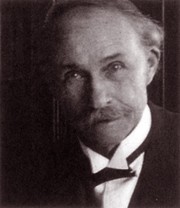
“In recognition of the major theoretical and practical significance of the research conducted by Dr. Brunner in the field of wound disinfection and wound management. Dr. Brunner’s work culminated in his publication on the disinfection of superficial and deep wounds, which was published in 1921.”
B. klärte mittels klinischer, bakteriologischer und experimenteller Untersuchungen die Wirksamkeit der verschiedenen zeitgenössischen Wunddesinfektionsmethoden. Er konnte dabei den Nachweis erbringen, dass seine eigene Methode, die Brunnersche Jodalkoholdesinfektion, die weitaus besten Garantien bietet gegen das Auftreten von Wunderkrankungen, etwa im Vergleich mit anderen antiseptischen Behandlungsmethoden wie Excision und Primärnaht, Carrel’sche Spülung, Lymphlavage nach Wright sowie Vuzindesinfektion (Chininderivat). Diese Erkenntnis, so die Gutachter, habe sich auch klinisch bewährt und sei insbesondere für die Chirurgie von grossem Nutzen.

